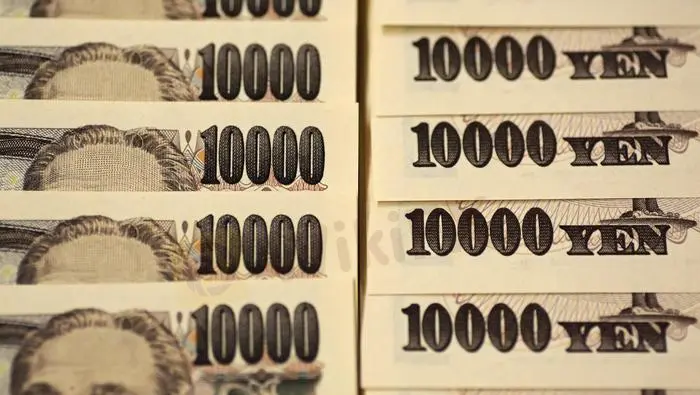简体中文
繁體中文
English
Pусский
日本語
ภาษาไทย
Tiếng Việt
Bahasa Indonesia
Español
हिन्दी
Filippiiniläinen
Français
Deutsch
Português
Türkçe
한국어
العربية
GBP/JPY May Fall as the Fed Feeds Yen Real Yield Advantage: Q3 Top Trading Opportunities
Abstract:GBP/JPY, BRITISH POUND, JAPANESE YEN – TOP TRADE IDEA, Q3 2021:
Japanese Yen supported as the Fed moves up rate hike timeline
Bets on structural disinflation give Japan a real yield advantage
Pound may suffer outsized losses vs. JPY, topping pattern eyed

The Japanese Yen rose in the wake of Junes momentous FOMC meeting, where policymakers said that price growth had surpassed their expectations and shifted up the timeline for on-coming interest rate hikes. Having previously seen rates flat through 2023, the central bank has now penciled in two hikes that year.
The priced-in market view implied in Fed Funds futures following the announcement is more aggressive still, envisioning one hike in 2022 and two more in the following year. That probably echoes subsequently hawkish comments from officials including the presidents of the St Louis, Boston and Dallas Fed branches.
Japanese yields rose in tandem with those in the US in response, reflecting the ubiquity of the US Dollar as the go-to medium of exchange global trade. Close to 80% of global monetary transactions are settled in USD. So, a rise in the cost of borrowing the Greenback typically translates into higher credit costs globally.
As it happens, the process that the Fed is slowly initiating finds most global policy rates having converged on Japan – that is, toward zero and sometimes beyond it, into negative territory – amid the onset of the Covid-19 pandemic. Recovering from these depths in most places is expected to come alongside reflation.
Japan is a familiar exception. Here, structural forces holding down prices for the better part of 30 years and inspiring an epic (and mostly fruitless) BOJ counteroffensive remain in play. What this means is that real interest rates – that is, nominal yields discounted by the expected rate of inflation – are higher in Japan than most of the G10.

Since most nominal rates have converged near zero, the size of the inflation haircut has become pivotal. That is inherently small in Japan relative to global counterparts, so the inflation-adjusted yield to be had on JPY-denominated holdings emerged as more attractive.
The BOJ policy of capping 10-year yields at 0% is an obvious headwind here, but it seems fragile. The central bank already owns almost half of Japans bond issuance to sustain it. Scope to do more seems limited, lest the monetary authority and the government itself be accused of outright debt monetization, an international taboo.
Of the major currencies, the Yen‘s most pronounced advantage in this sense seems to be against the British Pound. As inflation fears push the Fed moves to pressure nominal rates upward globally, Japan’s real-yield advantage seems likely to expand further.
GBP/JPY TECHNICAL ANALYSISOn the technical front, GBP/JPY may be forming a double top at resistance near the January 2018 high. Prices broke seven-month trend line support and negative RSI divergence warns of ebbing upside momentum. Pushing past support at 151.32 may expose the 148-149 zone. A further break below that might also pierce the uptrend from March 2020.



Disclaimer:
The views in this article only represent the author's personal views, and do not constitute investment advice on this platform. This platform does not guarantee the accuracy, completeness and timeliness of the information in the article, and will not be liable for any loss caused by the use of or reliance on the information in the article.
Read more

Weekly Fundamental Gold Price Forecast: Hawkish Central Banks a Hurdle
WEEKLY FUNDAMENTAL GOLD PRICE FORECAST: NEUTRAL

Gold Prices at Risk, Eyeing the Fed’s Key Inflation Gauge. Will XAU/USD Clear Support?
GOLD, XAU/USD, TREASURY YIELDS, CORE PCE, TECHNICAL ANALYSIS - TALKING POINTS:

British Pound (GBP) Price Outlook: EUR/GBP Downside Risk as ECB Meets
EUR/GBP PRICE, NEWS AND ANALYSIS:

Dollar Up, Yen Down as Investors Focus on Central Bank Policy Decisions
The dollar was up on Thursday morning in Asia, with the yen and euro on a downward trend ahead of central bank policy decisions in Japan and Europe.
WikiFX Broker
Latest News
Geopolitical Events: What They Are & Their Impact?
Top 10 Trading Indicators Every Forex Trader Should Know
ASIC Sues Binance Australia Derivatives for Misclassifying Retail Clients
WikiFX Review: Is FxPro Reliable?
Malaysian-Thai Fraud Syndicate Dismantled, Millions in Losses Reported
Trading frauds topped the list of scams in India- Report Reveals
Why Do You Feel Scared During Trade Execution?
Revolut Leads UK Neobanks in the Digital Banking Revolution
Fusion Markets: Safe Choice or Scam to Avoid?
SEC Approves Hashdex and Franklin Crypto ETFs on Nasdaq
Currency Calculator


